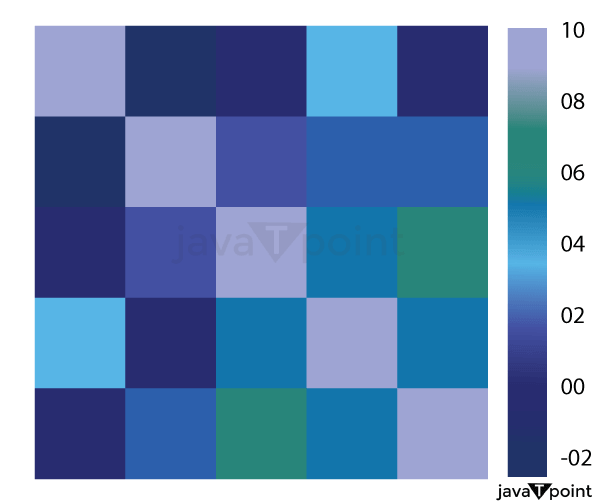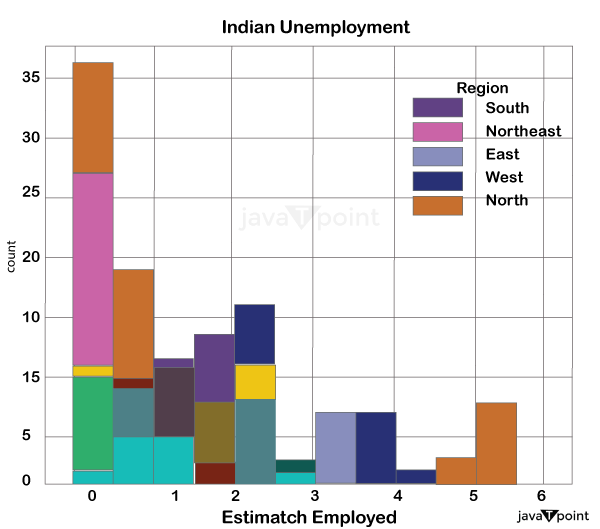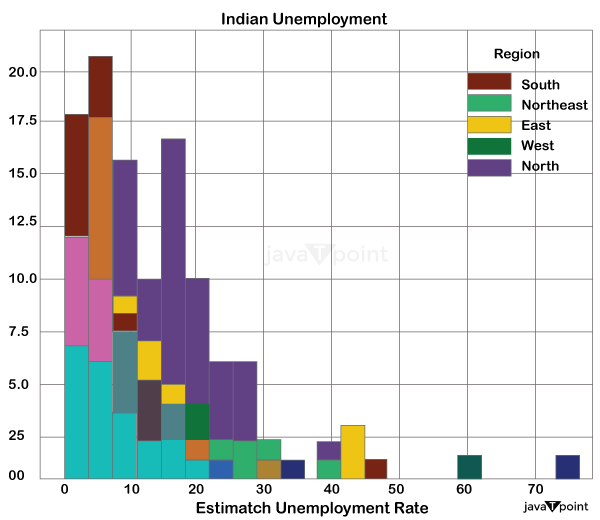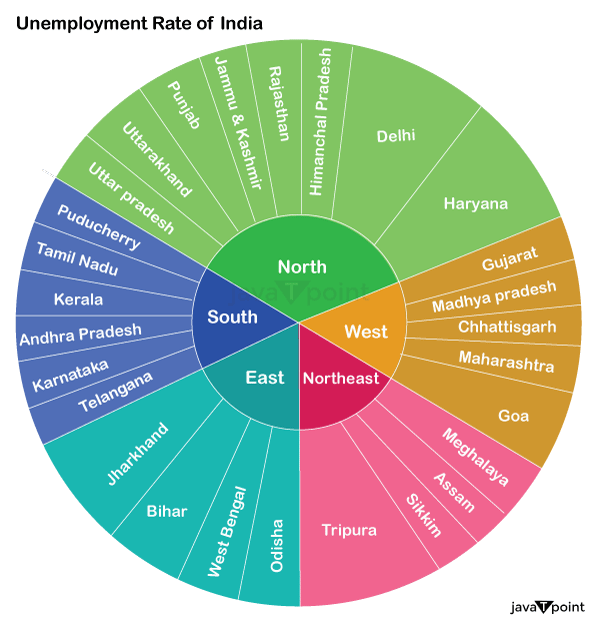Unemployment Data Analysis using PythonHow to calculate unemployment rate? The number of unemployed persons as a proportion of the total labor force is used to calculate the Unemployment rate, which is used to assess Unemployment. The Unemployment rate has significantly increased during COVID-29, making its analysis a worthwhile data science research. We'll walk you through the Python source code of Unemployment analysis in this tutorial. Introduction: Since 2020, several organizations have kept official records on Unemployment in the United States. The U.S. Department of Labor's Bureau of Labour Statistics (BLS) releases information regarding the overall number of employed and jobless individuals in the U.S. for the previous month and various other statistics early each month. The unemployment rate is determined by multiplying the civilian labor force by the number of jobless persons. To qualify as "unemployed," a person must be under sixteen years old, have not had a part-time or full-time job for at least four weeks, and have been actively seeking employment. Our group decided to examine U.S. Unemployment statistics, emphasizing the years 2000 through 2023. Our stringing was to forecast the jobless rate for the next year, 2023, using data from this period. We intend to forecast discrete numbers for each month in 2023 because the BLS only provides data on the jobless rate in discrete monthly increments. To determine how the various variables affect the rate, we want to put our data science expertise to the test. Data Exploration and AnalysisWe gathered data sets from the Bureau of Labour Statistics website (BLS), a federal agency that offers information on the U.S. labor market's activity, labor conditions, price fluctuations, and productivity. Additionally, we looked at data from one of the most dependable sources of financial information in the country, The Federal Reserve Bank of St. Louis' Federal Reserve Financial Database [https://fred.stlouisfed.org/]. The 20+ years of data in the CSV files we acquired (2000-2023) provide a good historical perspective that may be used to forecast future events. Data on educational attainment, race, and gender are included in some of the data fields we scrutinize. We utilized an API key to scrape data from the website for the data discovery phase. Using the reduce() technique, we chose a few reports relevant to the U.S. jobless rate, mapped them into a DataFrame, and then saved the outcomes as a CSV file. Then used, Python to remove redundant or empty rows and columns from the data and consolidate similar categories into a single CSV file (for example, different CSV files for Male and Female information combined into gender.csv). We established an AWS RDS cloud database and connected using a connection string. This was done after all the CSVs had been filtered and cleaned only to include relevant data. DatasetImporting the appropriate Python modules and using the dataset will allow us to begin Unemployment Data Analysis using Python Main table (for reference only):
Machine Learning ModelsOur machine learning models are used to implement the project's analysis phase. Rather than being predominantly categorized, our data are continuous. So instead of making a binary prediction, we'll make a numerical one. What the Unemployment rate will be by the end of December 2023 or the next month is the forecast we are attempting to make. K-Nearest Neighbor ModelThe K-Nearest Neighbour (KNN) method is one of the models created using machine learning that we will be putting into practice. KNN can be applied to classification or linear regression. We will divide the extra data into training and testing sets for our research, including consumer pricing for meat and job vacancies for various industries retrieved during the API request. Observation:
Support Vector Regression ModelThe SVR model is A supervised learning model frequently used to forecast discrete values. Since our project's stringing was to forecast discrete jobless rate figures for each month in 2023, this would help us achieve it. Observation:
Auto-Regressive Integrated Moving Average ModelAs another time series forecasting model, we investigate the AutoRegressive Integral Moving Average (ARIMA) machine learning model. A common ML technique for estimating the future values that a series will take is forecasting. A time series might be annually (for example, an annual budget), quarterly (for example, costs), monthly (for example, air traffic), weekly, daily, hourly (for example, stock prices), minutes (for example, incoming calls at a call center), or even seconds (for example, web traffic). Since jobless rate data is normally provided on a monthly or annual basis and since our goal is to forecast potential values for the rate of jobless at either the end of the year in December of that year or even at the end of the following month, this suits our research. To forecast the U.S. overall jobless rate and each factor by December 2023, we want to apply a Time Series model to quantify potential joblessness rates using a single dataset CSV each time. Observation:
First, we wanted to determine the expected national rate for each of the 22 months 2023. If the test was successful, we planned to repeat it for the other categories. However, given that we had problems even with the initial categorical dataset, we concluded that these problems would continue regardless of the category dataset chosen. Installation
UsageUse this project by doing the following:
Unemployment Analysis with Python Source CodeI will use a dataset of unemployment in India to analyze unemployment, as the unemployment rate is determined based on a specific location. The dataset I'm utilizing here includes information on India's unemployment rate from 2003 to 2029. Therefore, let's begin the work of analyzing Unemployment by importing the required Python modules and the dataset: ANALYZING DATASET Reading the Data Source Code Snippet Output:
Source Code Snippet Output:
Source Code Snippet Output:
Source Code Snippet Output: Region string Date string Frequency string Estimate Jobless Rate (%) float64 Estimate Employed float64 Estimate Labour Participation Rate (%) float64 Area string dtype: string Source Code Snippet Output:
DATA PROCESSING The data entered into the computer in the preceding phase is actually processed for interpretation at this stage. The process itself could differ slightly depending on the source of the data being processed (data lakes, social media platforms, connected devices, etc.) and the purpose for which it is used (studying advertising patterns, medical diagnosis from associated devices, deciding customer needs, etc.). Processing is carried out using machine learning algorithms. Source Code Snippet Output: Region 28 Date 28 Frequency 28 Estimate Jobless Rate (%) 28 Estimate Employed 28 Estimate Labour Participation Rate (%) 28 Area 28 dtype: int64 Source Code Snippet Output: (968, 9) Source Code Snippet Output: Region 0 Date 0 Frequency 0 Estimate Jobless Rate (%) 0 Estimate Employed 0 Estimate Labour Participation Rate (%) 0 Area 0 dtype: int64 Source Code Snippet Output: (940, 9) Let's check to see whether this dataset has any missing values: Source Code Snippet2 Output: Region 0 Date 0 Frequency 0 Estimate Jobless Rate (%) 0 Estimate Employed 0 Estimate Labour Participation Rate (%) 0 Region.2 0 longitude 0 latitude 0 dtype: int64 After looking into the missing values, I discovered those column names are incorrect. In order to make this data easier to grasp, I will change all the columns as follows: Source Code Snippet Let's now examine the relationship between the characteristics of this dataset: Source Code Snippet Output: 
Let's now analyze the unemployment rate by visualizing the data. I'll start by looking at the estimated number of employees by India's various regions. Source Code Snippet Output: 
Let's examine the unemployment rate in India's various areas. Source Code Snippet Output: 
Create a dashboard now to examine the unemployment rate in each Indian state by area. I'll employ a sunburst layout in this. Source Code Snippet Output: 
SummarySo here is how you can use the Python language to analyze the jobless rate. The number of unemployed persons as a proportion of the total labor force is used to calculate the Unemployment rate, which is used to assess Unemployment. I hope you enjoyed reading this tutorial on Python-based Unemployment rate analysis.
Next TopicBinary Search Tree in Python
|
 For Videos Join Our Youtube Channel: Join Now
For Videos Join Our Youtube Channel: Join Now
Feedback
- Send your Feedback to [email protected]
Help Others, Please Share










